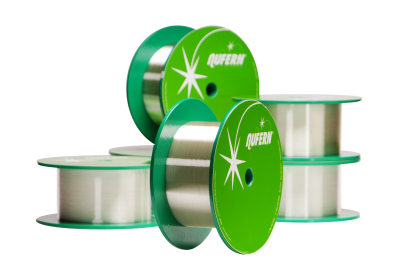
A new range of Thulium-doped fiber optic components from Coherent | Nufern enables construction of fiber lasers and oscillators operating at ~ 2 µm with higher output power than was previously possible. Specifically, advances in Thulium doping technology deliver significantly improved pumping efficiency, yielding higher power output (>1 kW) for gain fibers.
Plus, these NuTDF laser and amplifier fiber products incorporate Coherent | Nufern’s NuMATCH technology. This refers to a family of both gain and passive fiber products which all have optimally matched mechanical and optical characteristics, and which are fabricated to tight tolerances. This compatibility matching maximizes system throughput efficiency, allowing the inherent high power potential of these products to be fully realized. Plus, the tight fabrication tolerances facilitate repeatable splicing during assembly, thus permitting this high performance to be routinely achieved, even in volume manufacturing environments.
NuTDF laser and amplifier fibers are available in a variety of configurations, including single-mode (SM) and large-mode area (LMA) designs, as well as in both single and double clad options. This enables construction of lasers having a wide range of possible output powers and beam modes. Matching passive fibers for all these options are also available, for example, for remote delivery of the laser output.
Thulium fiber lasers with output in the 1900 nm to 2175 nm range are useful for a wide variety of applications, including medical and surgical uses, cutting, welding, sintering and marking of various organic materials, and eye safe industrial metal cutting and welding. They also service defense applications, such as eye safe atmospheric transmission for point-to-point, free space telecommunications, and LIDAR/LADAR.
Contact Details
Related Glossary Terms
- sintering
sintering
Bonding of adjacent surfaces in a mass of particles by molecular or atomic attraction on heating at high temperatures below the melting temperature of any constituent in the material. Sintering strengthens and increases the density of a powder mass and recrystallizes powder metals.
